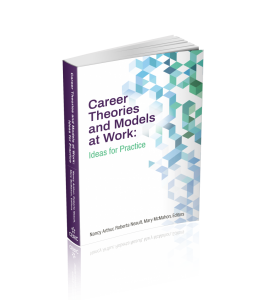Career development professionals (CDPs) support diverse clients with a wide range of career-related concerns. They typically don’t have much time together, so it’s important to be able to quickly sort out the clients’ unique needs in order to co-develop an action plan that comprises “SMART” goals and next steps.
Where to start?
Just as builders refer to blueprints and drivers rely on maps and navigation systems, CDPs need help in making sense of complex information. Any of these professionals could just “wing it.” A builder could start building and work out the details along the way. A driver could follow other vehicles on the road and take the most popular exits. However, as clients, patients, customers or colleagues of such professionals, we’d likely be appalled. We might label them unprofessional; we’d almost certainly not trust their recommendations or approach. Perhaps we’d find it hard to take them seriously, questioning their credibility.
Blueprints, road maps and navigation systems all facilitate a concurrent understanding of the big picture and essential details. Instead of random experimentation, wild guessing or wasting time with dead ends and backtracking, these professional tools contribute to efficiency, accuracy and timely progress.
For CDPs, these tools are career theories and models. They equip career professionals with the skills to identify which information to focus on and how to make sense of it within the client’s unique context. Like the multiple layers of an architect’s blueprint, different theories offer different perspectives about what’s going on for the client.
In theory …

For example, in the chapter on Career Engagement that I co-authored with Deirdre Pickerell, we introduced a complex vignette with a dual-career couple contemplating changes in work roles at the same time as they were planning to expand their family. In the chapter, we considered their career challenges through the perspective of career engagement, focusing on how they might be feeling concurrently overwhelmed and under-utilized. By applying that model, we identified several relevant interventions that might help them move forward.
However, had we chosen to apply Hope Action theory (as described in the chapter by Spencer G. Niles, Norman Amundson and Hyung Joon Yoon), our interventions may have focused more on building and sustaining hope during a time of major career/life transitions.
Similarly, had we chosen to apply the Decision-Action model (as described by Louis Cournoyer and Lise Lachance), our interventions may have focused more on what supports and processes would be useful to this dual-career couple in their decision-making process.
From a culture-infused perspective (as described by Nancy Arthur), our attention may have first turned to how the CDP’s own culture and beliefs about what constitutes a “good” career/life choice might be influencing work with this couple, and also how each of the individual’s cultural backgrounds and influences might be impacting their ability to find a solution that suited them both. From the perspective of the Systems Theory Framework (as described by Mary McMahon and Wendy Patton), we would have listened to the couple’s stories and attended to their individual characteristics and contextual influences. We would have noted recursive patterns and unexpected chance occurrences within a time continuum including the past, present and future.
Expanding Your Toolkit
It’s normal to have favourite tools. Look in any mechanic’s tool chest and you’ll find some tools are more worn than others. The same is true for CDPs. You likely reach for one assessment tool more than others; you may find yourself regularly recommending the same book, video or workshop. You probably have a favourite theory that helps you to make sense of what’s going on for your clients.
However, just as that tradesperson has other tools that are essential to use in specific circumstances, it’s helpful for CDPs to expand their toolkits with more theories to draw upon when unique client situations present themselves or when a new perspective might contribute to helping the client move forward more efficiently. It’s not just enough to buy the tool (or read about a theory or model); if you don’t apply it, it will stay shiny and unworn – taking up space but not serving any useful purpose.
I challenge you to choose at least three new theories or models to explore this year (you can find many options in the table of contents of CERIC’s new publication). A simple starting place might be to meet with some colleagues for a case-conceptualization activity where you each apply a different theory or model to the same client or scenario. Building comfort with applying a variety of theories and models will help you navigate complex client scenarios more efficiently – and it will keep your work fresh and interesting, too!




